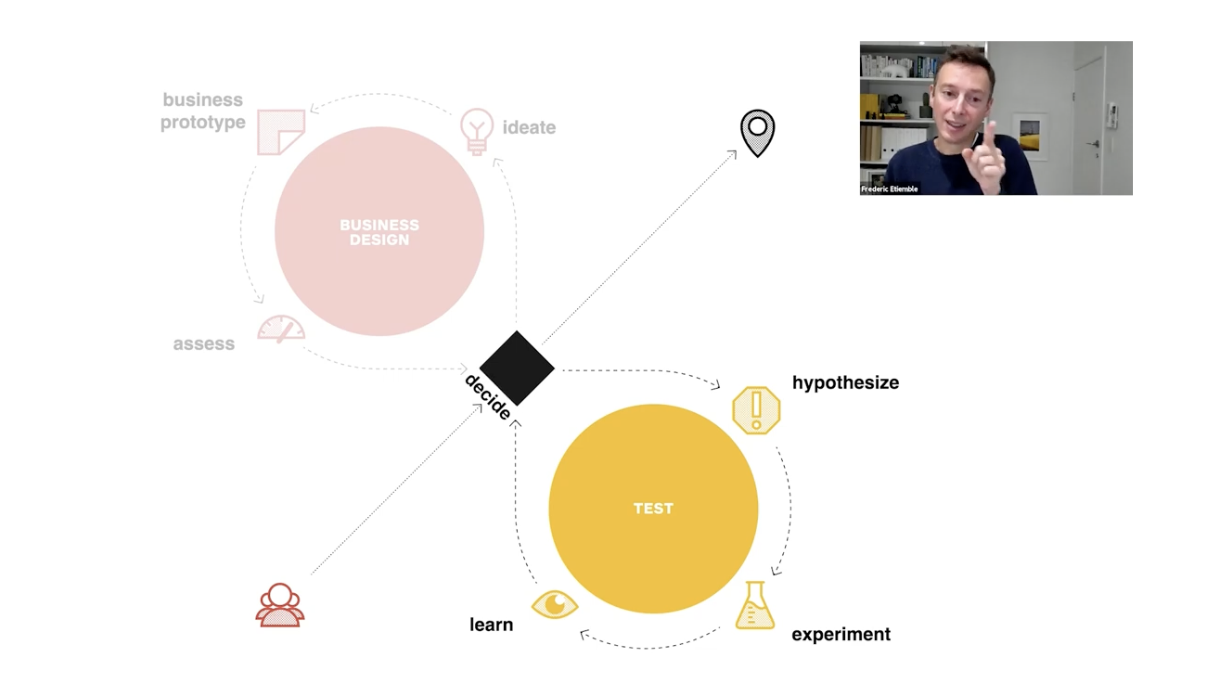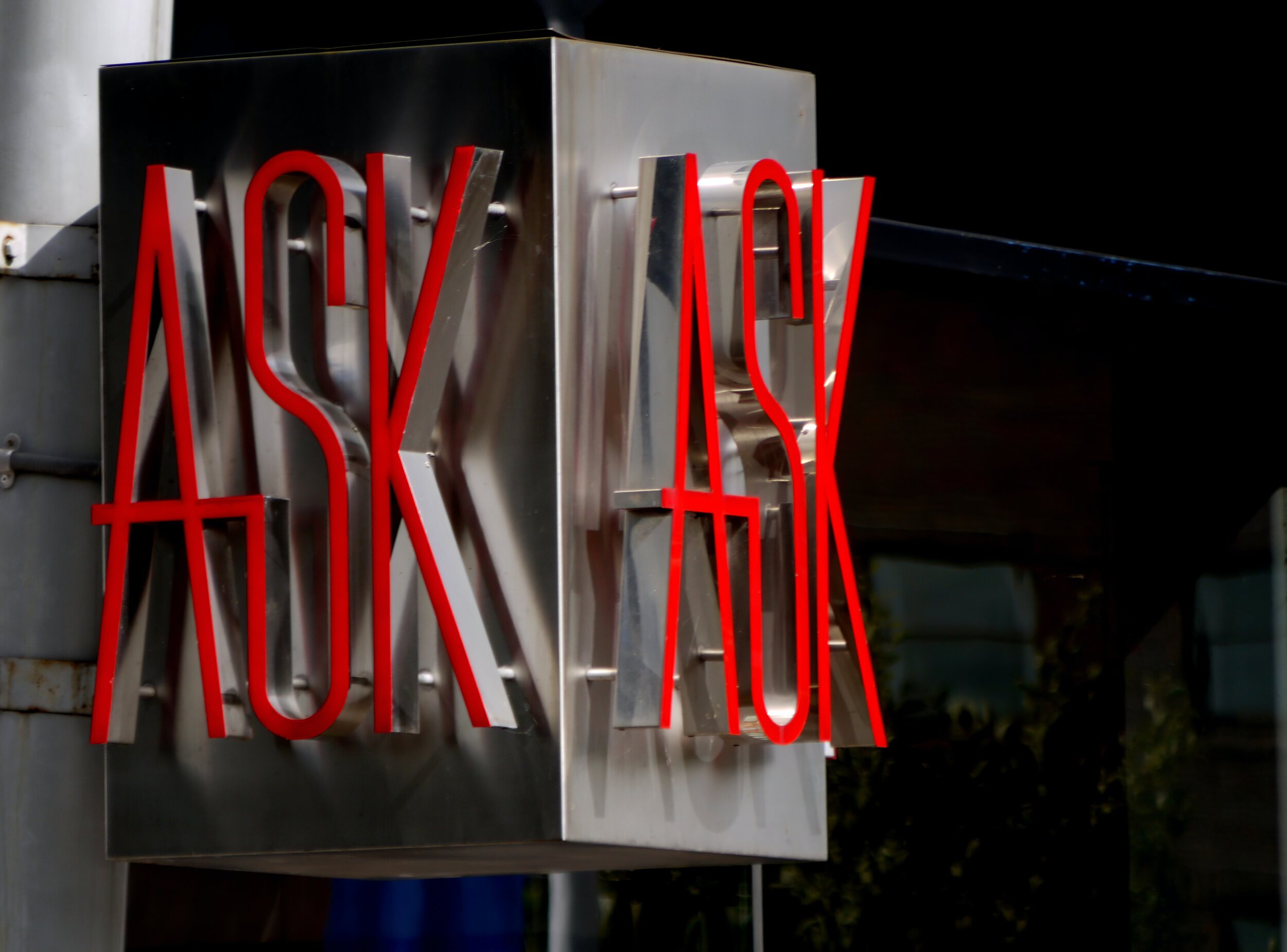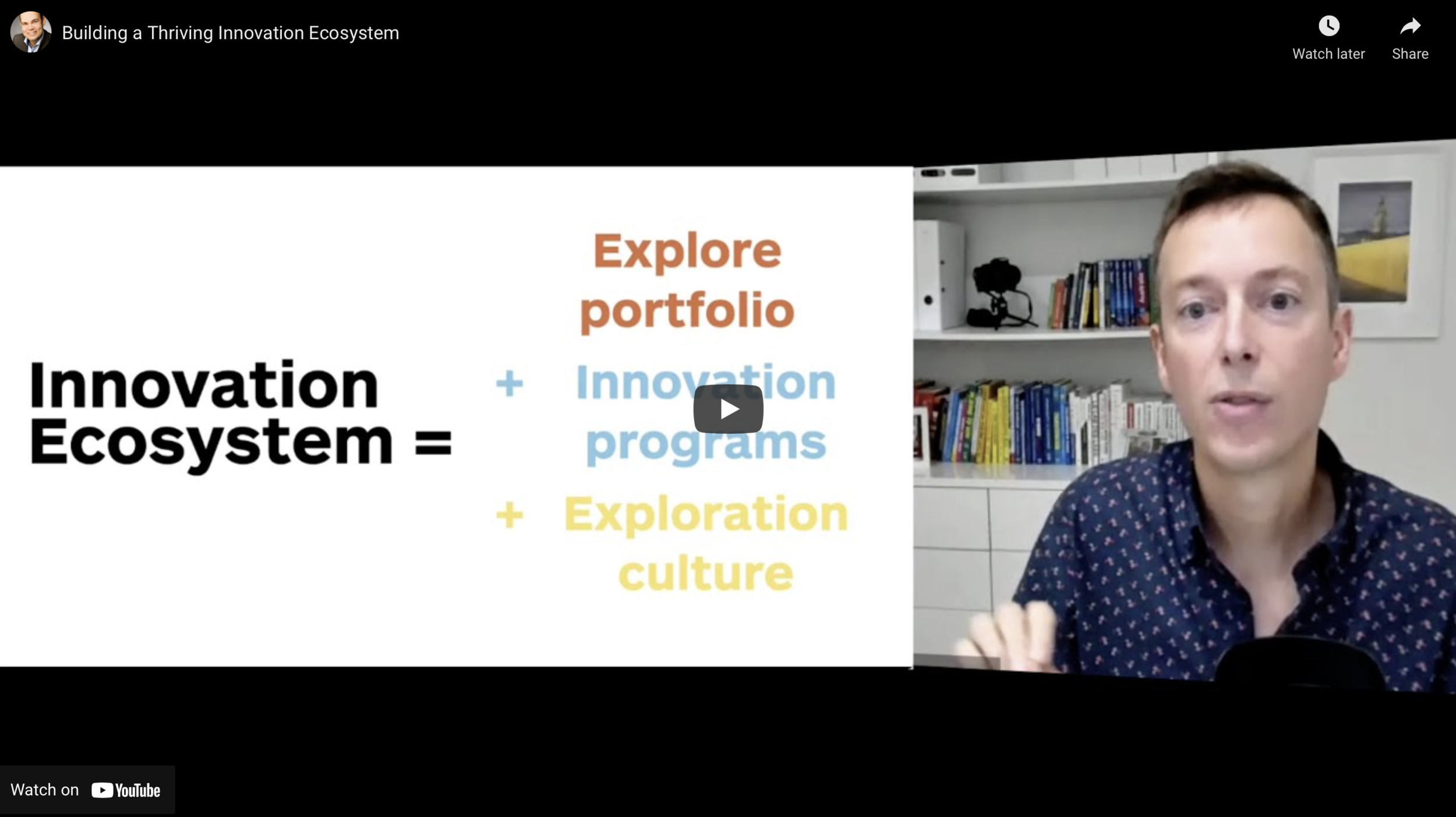What you should know about innovation’s time to impact
At this point in time in the Western world, it is beyond debate that leaders in large organisations focus on the very short-term. Their time is expertly organised to hit the next quarter numbers and deliver on yearly objectives. It flows from the beginning to the end of the financial year, and then resets for the next one. Beyond the next financial year, a big blur. The unthinkable.
In the innovation space that means that leaders expect investments to pay off quickly, within that 2-year window, which explains why the innovation portfolio we see in most organisations overemphasizes efficiency innovation, with sometimes a few sustaining innovation projects, and hardly any transformative innovation.
This always leaves me puzzled, with the same question in my mind : where is the new growth that leaders expect going to come from?
When leaders turn to us for help to get more sustaining and transformative innovation in their portfolio, the last thing they want to hear is that transformative innovation’s time to impact is unpredictable and long.
Still it is important to manage leaders’ expectations early on, if only to give transformative innovation the best chance of success.
Let me explain in this post what I believe all leaders should know about innovation’s time to impact and how to overcome the longer time to impact of transformative innovation.
For more background on the 3 types of innovation please read what type of innovation are you talking about? For better readability I will use the word innovation in the rest of this post for sustaining and transformative innovation, i.e. innovation types with higher uncertainty.
Innovation’s time to impact is unpredictable
In the below video I go through the different steps of the business design and testing double-loop one-by-one, highlighting what innovation teams do at each step when they explore ideas for new products, or services.
What I want to emphasize here is that teams will go through numerous loops in their innovation journey. Their work is non-linear and cannot be planned in the way that most projects are usually planned in a large organisation. When they start their business design and testing work, innovation teams enter a dimension of time that is iterative, i.e. non-linear. While it is not quantum physics, it takes time to adjust to the discipline of innovation and can be confusing at first for teams to work in such an iterative way. For instance, an innovation team could lose itself in endless iterations that create no real value.
And leaders could be confused as well by non-linear progress of the team. What to make, for instance, of a progress estimate that goes down because of a successful experiment? Should they continue to fund the team hoping it will fail their next experiment to see their progress go back up ???!!
To manage innovation appropriately, it is important to have the right governance in place to pause the endless tumbling at agreed moments, make a snapshot of progress and potential, compare it to expectations and make the most relevant decision accordingly.
Innovation’s time to impact can be very long
In innovation training I often use Nespresso as a case study to demonstrate the power of the Business Model Canvas to tell the strategic story of how a business idea creates, captures and delivers value for an organisation. Another fascinating aspect of the Nespresso case is the time it took from idea to success.
What initially appears as the core component of the Nespresso business model, the integration of a coffee machine and coffee pods was in place as early as 1974. Still, it took years of trial and error, acute political skills to avoid project termination, the recruitment of Nestlé outsider Jean-Paul Gaillard in 1988, and many more adjustments to the business model before Nespresso could turn their first profit in 1995, 20+ years into their entrepreneurial journey.
“Patience et longueur de temps font plus que force ni que rage” Jean de la Fontaine
And leaders are going to need patience because innovation’s time to impact can indeed be very long.
Innovation practice has made a lot of progress since the 80ies though, and today we know how to explore a portfolio of new business ideas and get to a solid business case in 2 to 3 years. Still, even in the digital age, it takes time to scale a business, a few years rather than months, so leaders must be willing to invest in a timeframe that is much further away that what they are used to, and often beyond their tenure within the company.
That means that leaders in a large organisation need to have a “pay it forward” attitude, making an investment that might only benefit one of the next generations of leaders. Depending on their context and personal worldview, it may or may not be possible.
Innovation’s time to impact is out of synch with disruption
Disruption can be much faster than transformative innovation. Imagine yourselves in the shoes of Nokia executives at the end 2009. And just for a moment ignore the part of the below graph that is right of the arrow.
Yes, the launch of the iPhone by Apple in 2007 cost you 10% market share, but you’ve just delivered another quarter of market share growth. Things seem finally under control and looking up. You have reasons to be confident, and your strategy team is letting the world know.
“The development of mobile phones will be similar to PCs. Even with the Mac, Apple has attracted much attention at first, but they have still remained a niche manufacturer. That will be in mobile phones as well.” – Nokia chief strategist Anssi Vanjoki
No one in the company anticipates the cliff ahead and how steep it’s going to be. Yet a fast decline into obsolescence is just around the corner.
When a crisis like this one hits, it’s too late to turn to corporate innovation for a solution. Any solution they could bring would be out of synch with the crisis at hand.
In the 2 years it took Nokia to collapse from more than 40% market share to less than 10%, the most innovative companies would be able to come up with a few solid business cases for new products, services, and businesses; business cases that are based on real data from experimentation. Even if Nokia had been one of those innovation champions, those new businesses would have been nowhere near ready to replace such fast declining revenues.
Corporate innovation is the equivalent of a “disruption insurance policy”, but for this insurance policy to be useful at the right time, you need to commit before the crisis hits and manage an EXPLORE portfolio that provides a constant stream of new businesses that can grow your business and/or compensate any decline of your mature business models.
When is the right time for transformative innovation?
So, what’s the consequence of all this for leaders who want to build long-term resilience in their company?
Is this too hard? Should leaders give up on transformative innovation?
Not quite. But they should get the timing right. Transformative innovation’s time to impact is unpredictable and long. Being aware of that is already a big step forward. And along the way to long-term resilience they are beacons that should be acknowledged and celebrated. A 10-year new business success started with a 2-year exploration leading to a business case based on experimentation data. This solid business case was once a 3-month discovery project, one of many projects explored that year. That discovery project started as an idea in the head of someone, an idea that the organisation managed to capture. Focusing on those beacons can help overcome the reluctance to invest in such a long-term endeavour and pave the way for resilience and growth.
For leaders willing to be patient and maybe “pay it forward”, the most important decision is actually to start building this innovation ecosystem.
To paraphrase the famous Internet meme on planting a tree, the best time to start building your company’s innovation ecosystem was 10 years ago. That could sound like bad news. But the good news is that the second-best time is now.
Reach out if you need help with the design and development of your innovation ecosystem.












